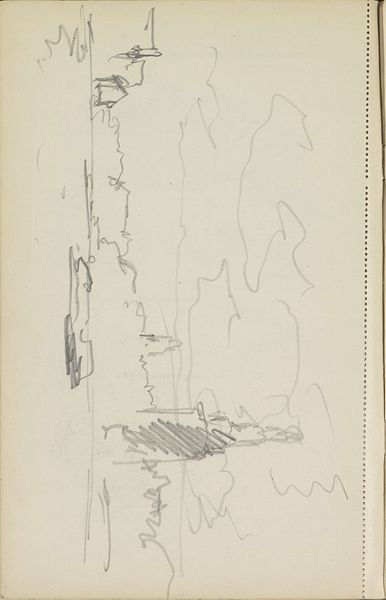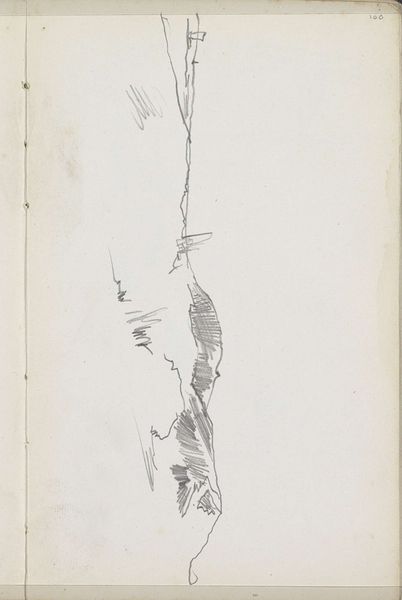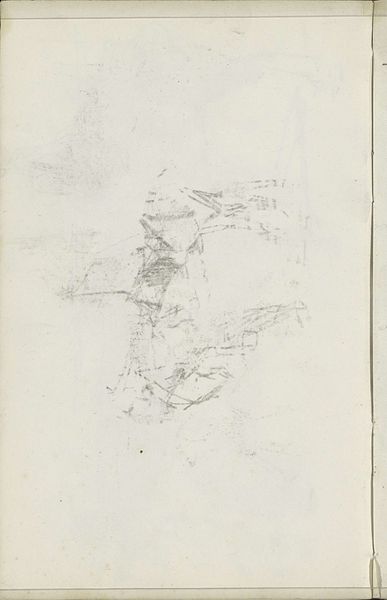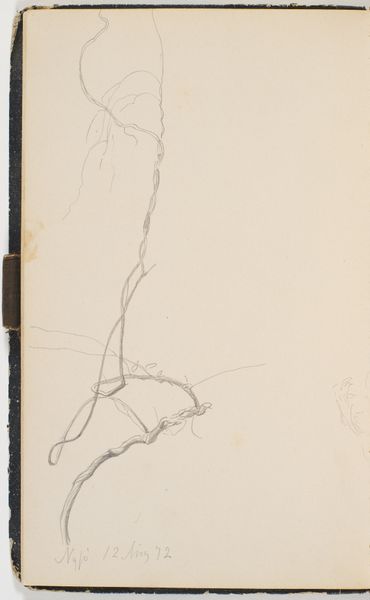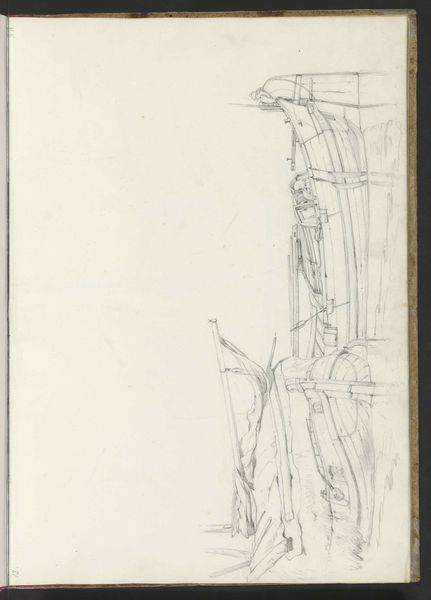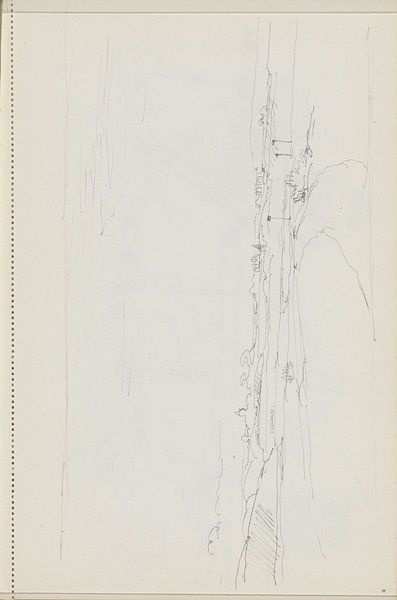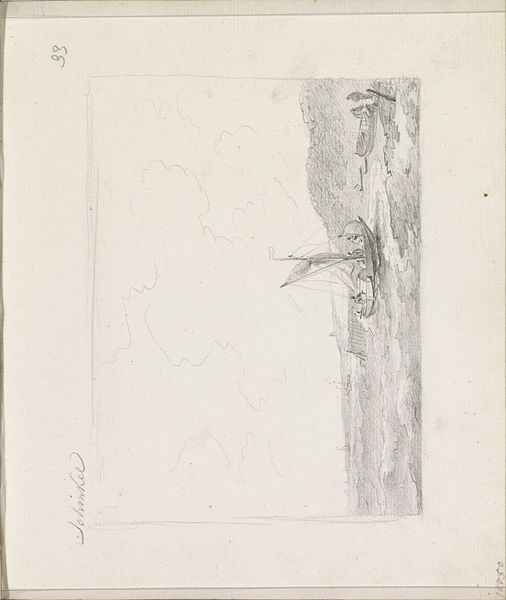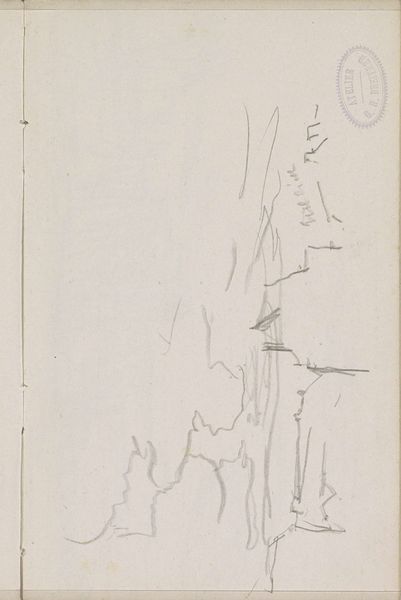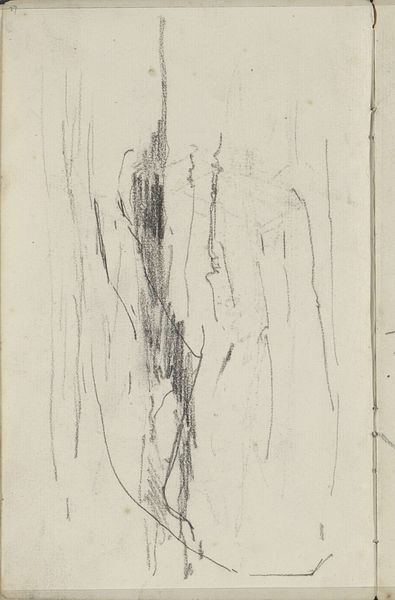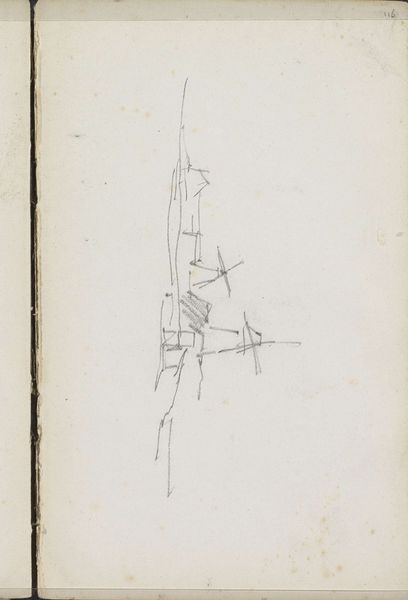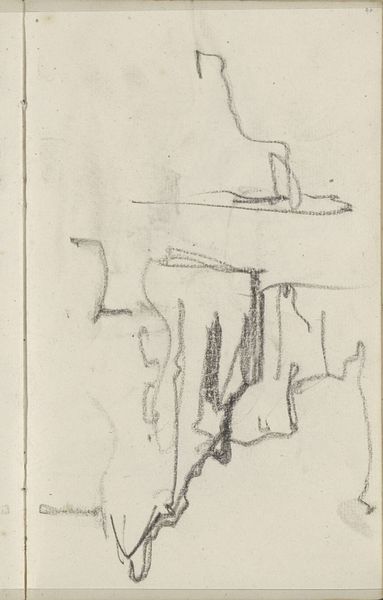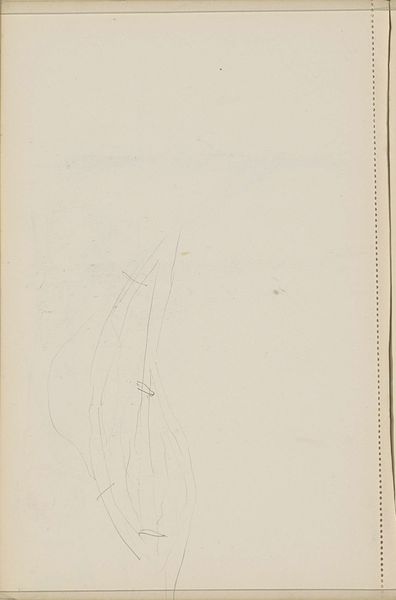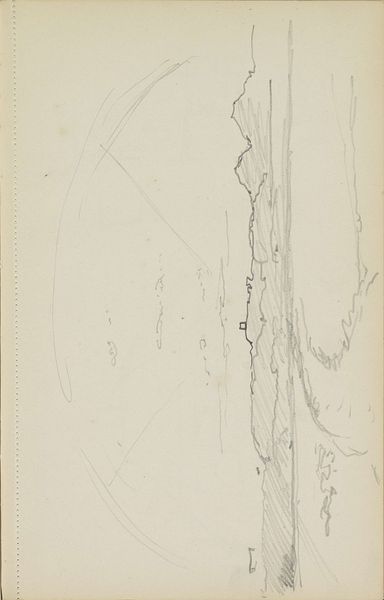
Copyright: Rijks Museum: Open Domain
Editor: Here we have Maria Vos' "Bomen aan een weg," or "Trees Along a Road," created in 1858. It’s a pencil drawing on paper. It feels so fleeting and light. What stands out to you in this sketch? Curator: I'm immediately drawn to the evident labor—the repetitive, almost meditative strokes. Consider the type of pencil used. Was it mass-produced, readily available to aspiring artists, democratizing artmaking itself? This would influence the style; rapid execution over careful modelling of tone for instance, typical of working in easily erasable, readily produced pencils. Editor: That's fascinating. It didn't occur to me to think about the pencil itself as a tool shaping the artwork. Curator: Exactly! Also, notice the paper. Its likely sourcing is important. Is it handmade, more exclusive? Or is it a commercially available sheet, enabling wider artistic expression beyond elite circles? We have to examine art's relationship with the society producing the materials, the means and availability for the execution of pieces. Editor: So, looking at this, you see a commentary on the democratisation of art through material accessibility? Curator: Precisely. It is very much possible Vos had only access to very cheap pencils and paper to realize her landscapes. The materials of drawing and painting held economic context too and reveal how production relates to art’s reception. Editor: I hadn't thought of landscape drawing this way before! Now I want to research the availability of art materials in the 19th century! Curator: See! Considering the raw materials alters your relationship with not just the art itself, but its historical impact as well.
Comments
No comments
Be the first to comment and join the conversation on the ultimate creative platform.

